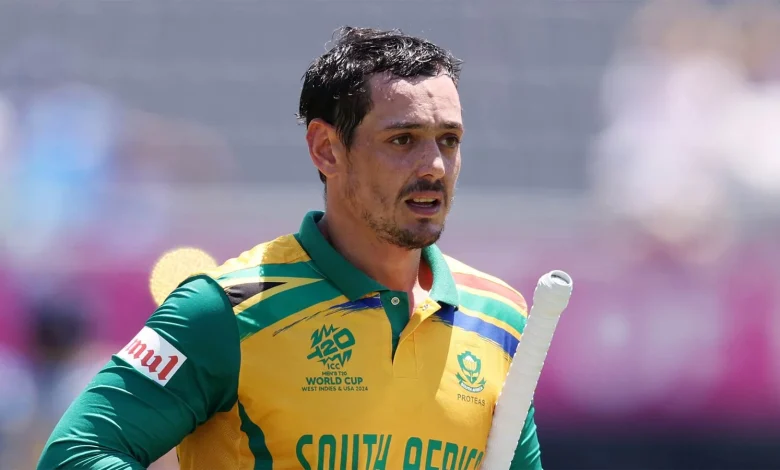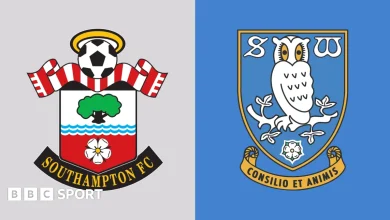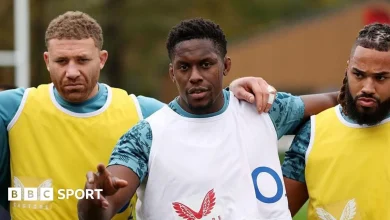Quinton de Kock’s Triumphant ODI Return: Masterclass in Faisalabad

Quick Read
- Quinton de Kock scored his 22nd ODI century against Pakistan in Faisalabad.
- He returned to the South African squad after more than a year away from international cricket.
- De Kock’s comeback followed his own initiative, expressing a desire to contribute again.
- South Africa’s win rate is higher with de Kock in the side compared to his absence.
- His return has sparked debates about domestic participation and international selection.
De Kock’s ODI Comeback: Quiet Brilliance in Faisalabad
November 6, 2025, at Iqbal Stadium in Faisalabad was not just another stop on South Africa’s white-ball tour. For Quinton de Kock, it marked a deeply anticipated return to the international stage, after months spent in franchise leagues and personal reflection. The context was clear: South Africa needed to chase 270 to level the ODI series against Pakistan, and de Kock was at the heart of that pursuit.
The opening exchanges were tense. Lhuan-dre Pretorius partnered de Kock at the top, and together they faced down the early spells of Shaheen Afridi and Naseem Shah. Early chances and dropped catches gave both teams moments to regret and reconsider, but de Kock remained unflustered. His approach was neither brash nor hurried—just clinical, a batter at peace with the game.
Century of Composure: De Kock’s 22nd ODI Hundred
As the overs ticked by, de Kock’s innings unfolded with understated mastery. At 28.4 overs, he reached his 22nd ODI hundred with a flick off his pads—a shot that spoke more about timing and placement than power. There were no wild celebrations, just a quiet raise of the bat and a handshake with Tony de Zorzi. Even Fakhar Zaman’s athletic fielding couldn’t overshadow the moment. This was de Kock, the veteran, reminding everyone of his value not just through numbers, but through presence.
His partnership with de Zorzi proved pivotal. While de Zorzi played with caution, de Kock kept the scoreboard ticking, finding boundaries off Faheem Ashraf and others. The pitch in Faisalabad offered plenty to batters, but the chase was not without its pressures—especially after Pretorius departed just shy of a half-century. Pakistan, buoyed by their bowling breakthroughs, needed a spark to defend their total.
The South African run rate rarely dipped below a run-a-ball, and de Kock’s half-century arrived in just 48 balls. Pakistan’s bowlers appealed, strategized, and searched for answers, but de Kock responded with a towering six off Ashraf—a statement of intent, but delivered with characteristic restraint.
The Road Back: From Franchise Leagues to Proteas Greens
De Kock’s return to international cricket has been a story unto itself. After retiring from Test cricket in December 2021 and stepping away from ODIs post-World Cup 2023, his future in the Proteas setup seemed ambiguous. Yet, as reported by Cricbuzz, the conversation that brought him back was initiated not by selectors but by de Kock himself. Late one night in Darwin, he called coach Shukri Conrad: “I think I’ve still got a lot to offer. I miss playing for South Africa. I want to play for the Proteas. I think I can make a difference.”
Selectors did not hesitate. Conrad described de Kock as a talisman, not just for his runs but for the intangible qualities he brings to the squad. His experience, especially in tough environments like Pakistan, would be invaluable to younger teammates such as Dewald Brevis and Lhuan-dre Pretorius.
Since stepping away from the international spotlight, de Kock’s career has been marked by stints with teams like Seattle Orcas, Barbados Royals, and Kolkata Knight Riders. He’s been a fixture in T20 leagues, where his status and earnings fluctuated with the shifting sands of franchise cricket. Yet, as the numbers show, South Africa’s win rate with de Kock in the side remains notably higher—over 61% compared to 40% in his absence.
Debates and Dynamics: The Value of Experience
De Kock’s return has reignited debates about player eligibility and the balance between domestic and international commitments. Some argue that regular participation in local competitions should be mandatory for national selection. De Kock last played a match solely under Cricket South Africa’s auspices in February 2022. But unlike the fraught comeback attempts of other stars, de Kock’s re-entry has been open, sincere, and welcomed by management.
His financial standing may be secure—with an estimated net worth of USD 13 million—but even top players have seen their market value fluctuate. The emergence of young stars like Brevis, who fetched seven times de Kock’s salary at the SA20 auction, signals a generational shift. Still, the Proteas appear to need de Kock as much as he needs the challenge and camaraderie of the international game.
Faisalabad Finale: The Impact Beyond Runs
Back on the field, de Kock’s century was more than a statistical milestone. It was a bridge between eras—a veteran anchoring the chase while mentoring the next wave of South African talent. His calm under pressure, ability to marshal the innings, and role as wicketkeeper brought stability to a side often searching for it.
Pakistan’s bowlers continued to fight, but South Africa’s chase was made to look routine, largely due to de Kock’s assured performance. By the 30th over, South Africa was well on track, needing just 55 runs with nine wickets in hand. The contrast was stark: while Pakistan’s innings had seen regular wickets and stuttering partnerships, de Kock’s presence smoothed the path for the visitors.
As South Africa looked set to level the series, the significance of de Kock’s return became clear. It was not just about the runs scored or the partnership built. It was about a seasoned campaigner choosing to jump back into the boat—not reeled in, but returning by choice, with something left to prove and something to offer.
De Kock’s composed century in Faisalabad stands as a testament to the enduring value of experience and self-motivation in international cricket. His return has not only bolstered South Africa’s batting but also challenged the conventional wisdom about player selection and longevity. The Proteas’ embrace of their enigmatic talisman reflects a broader truth: in sport, the right blend of youth and experience is often the difference between promise and performance.





